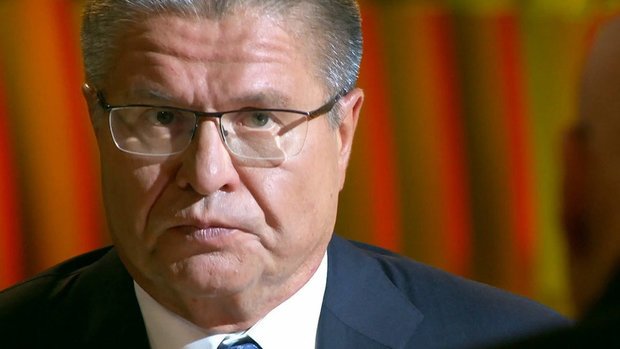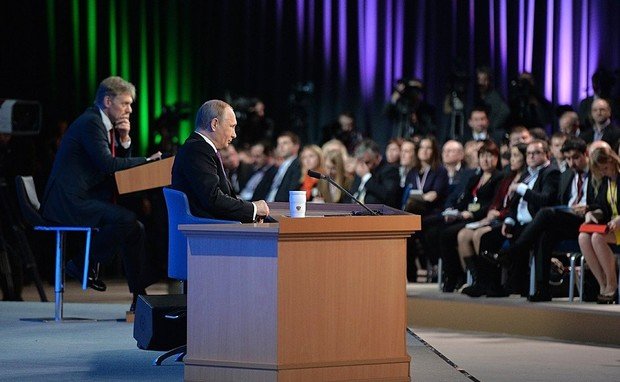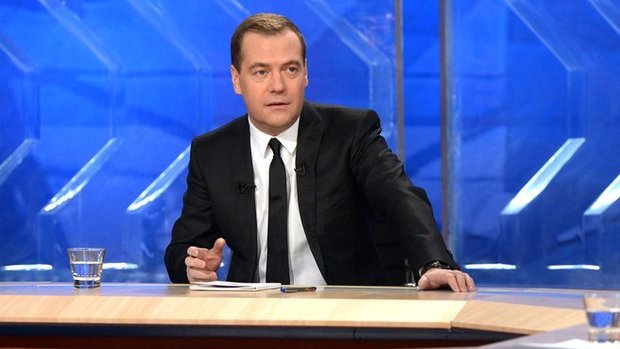The 2014 crisis in full face and profile. About how 'acid state' shifts to search of the bottom
With what the country approached ''the shock of the year 2014'' and what it has after the recession. Part I
The crisis that hit Russia in 2014 differed from the previous two in depth, nature and scale of social consequences. Starting as an ''investment pause'', it eventually moved into the acute phase, devalued wages and savings and led to increased poverty. Then it took the form of economic depression, from which the country has not finally emerged until today. With what Russia approached the year 2014 and what it has as a result – read in the material of Realnoe Vremya (part I).
Crisis is the right word
Some evidence that the situation in the Russian economy is deteriorating has been accumulating since 2012, but officials, while it was possible, avoided the term ''crisis''. In the reports and forecasts of the ministry of economic development and the Central Bank of Russia what was happening was often described by the words ''slowdown'', ''cooling'' or ''investment pause''.
The word ''crisis'' came back into use later, when the turmoil in the currency market developed in full force. The first high-ranking official who uttered this word not in the context of the events in Ukraine was the then minister of economic development. In an interview with Vedomosti, answering the question of how he would describe the situation in the economy, Alexey Ulyukayev said, ''Probably, the crisis is the right word. It is right because it does not have a clear definition: stagnation, recession have it, but crisis does not.''

The Ulyukayev's interview was published on 18 December 2014, two days after the so-called ''black Tuesday'' and the emergency night meeting of the Central Bank on the issue of another — the sixth for the year — increase in the key rate. On the same day, President Vladimir Putin held an annual large press conference, during which he said, ''The [world] economy will grow. And our economy will come out of today's situation. How long will it take? Under the most unfavourable circumstances, I think that two years.''
In a sense, Putin was right: the recession lasted exactly two years (2015-2016). But the crisis is not only a fall in GDP.
As for Minister Ulyukayev, he often had to measure the depth of economic downturn over the next two years, up to his detention in November 2016. Several times he said that the economy had reached the lowest point or that it was beginning to recover. So it was, for example, in July, October and November 2015, and June 2016. One day, when it was a reason for ironic remarks, the official lamented, ''They say that Ulyukaev eight times found the bottom of the crisis. At no time! I don't even have that word in my vocabulary.''

''China was growing, India was growing, we were falling''
The crisis, which began in 2014, differed from the previous ones by nature and depth. This time the economic downturn was not as strong as in 2009 (-7,8%) or 1998 (-5,3%). However, coming out of the last recession, Russia did not enter the stage of rapid recovery growth, as it was in 1999 or 2010. In addition, the events of 2008 did not have such large-scale social consequences as falling incomes and rising poverty.
However, there was something in common in all three episodes. Konstantin Ordov from the Plekhanov Russian University of Economics says that the trigger for each of them was an unexpected collapse in oil prices. With them, the crisis of the late nineties began (in 1997-1998, Brent oil fell from $20 to $9,8 per barrel), as well as the crisis of 2008 (it fell from $134 to $41,5 per barrel).
''After 2008, government spending became much more dependent on oil and gas revenues. But the recovery of oil and gas budget revenues after 2008 was very fast, and then they again increased sharply, which made it possible to ensure the social spending of the budget. Hence, there are no consequences for the real incomes of the population. But the drama 2014 is a lot bigger,'' notes Ordov.
According to him, the volume of oil and gas spending in Russia decreased during 2015 and 2016 — that is, chronologically it coincided with the period of recession.
''The main and practically the only driver of the Russian economy growth was the oil and gas sector and other raw materials companies. GDP growth is closely linked to periods of growth in oil and other commodities. Since 2011, oil growth has stopped, and this has led to economic stagnation,'' he adds.
At the same time, some indicators characterizing the state of the economy stopped growing already back in 2013, when the average price of Urals oil was $107,9 per barrel.
''All previous crises in Russia occurred simultaneously with the crises of the world economy. The specifics of 2014-2015 is that no crisis was in the world economy: America was growing, Europe was growing, China was growing, India was growing, but we were falling,'' says economist Sergey Khestanov.
In addition, the crisis of 2014-2015 was the first crisis in which geopolitics manifested itself, ''Both in 1998 and in 2008, the attitude towards Russia, in general, was benevolent, it had never occurred to anyone that there would be any sanctions,'' he adds.
Acid state
The decade and a half that passed since the late nineties was successful for the Russian economy: the country's GDP grew almost continuously from 1999 to 2014 inclusive. The model based on raw materials exports worked and gave certain results — in the fight against poverty, the formation of the middle class.
The share of poor households decreased 2,7-fold from 29% (42,3 million people) to 10,8% (15,5 million people) from 2000 to 2013. In the 2000s it was the period of formation of the system of consumer and mortgage lending. Gradually, the level of welfare of citizens increased: in 2000, it was an average of 19,2 square metres of housing per inhabitant, in 2013- 23,4 metres; almost a third of Russians had private cars before the crisis.
However, the worked-out model gradually began to fail. This became apparent in 2013, when industrial growth slowed from 2,6% a year earlier to 0,3%; investments in fixed assets fell by 0,3% after an increase of 6,7% in 2012; the dynamics of retail trade turnover decreased from 5,9% to 3,9%.
The reason for this slowdown, according to the ministry of economic development, was a decline in prices and demand for major Russian goods: in the first half of 2013 Urals oil cost by 4,9% less than in January-June 2012; gas fell by 8,7%, aluminium — by 7,7%, copper — by 6,8%, and nickel — by 12,4%.

On 6 December 2013, Prime Minister Dmitry Medvedev at a meeting with journalists of five TV channels admitted that the situation in the economy was ''quite complex'' — like in most developed and rapidly developing countries: ''I've recently used this term — acid state.'' Nevertheless, he encouraged, Russia has economic growth (''however, small''), and ''maybe even better situation than in Europe and in a number of other countries''.
The ministry of economic development also kept a usual optimistic stance. In its initial basic macro forecast, published on 23 October 2013, it was said that in 2014-2016 the price of oil would not fall below $100 per barrel, and the economy would grow by 3-3,3% a year. Two months later, on 27 December 2013, the ministry clarified the forecast: expectations for GDP growth in 2014 were reduced to 2,5%. But neither one nor the other forecast was destined to come true.
To be continued